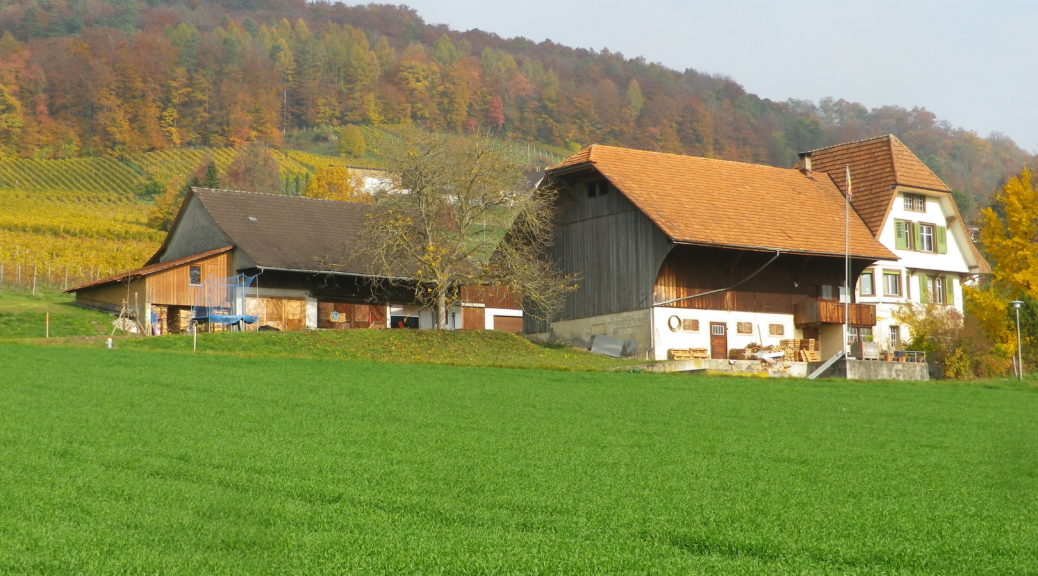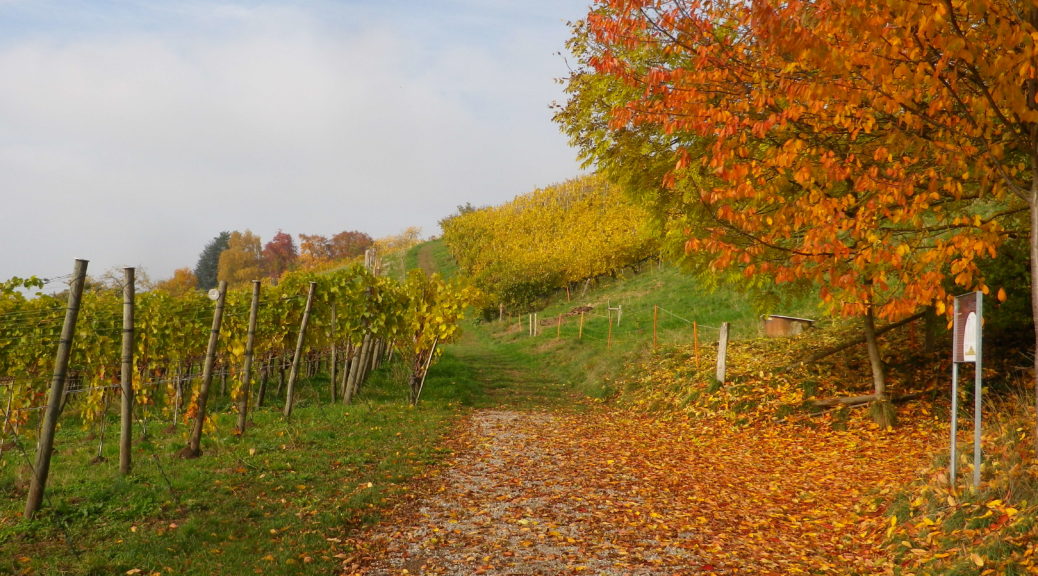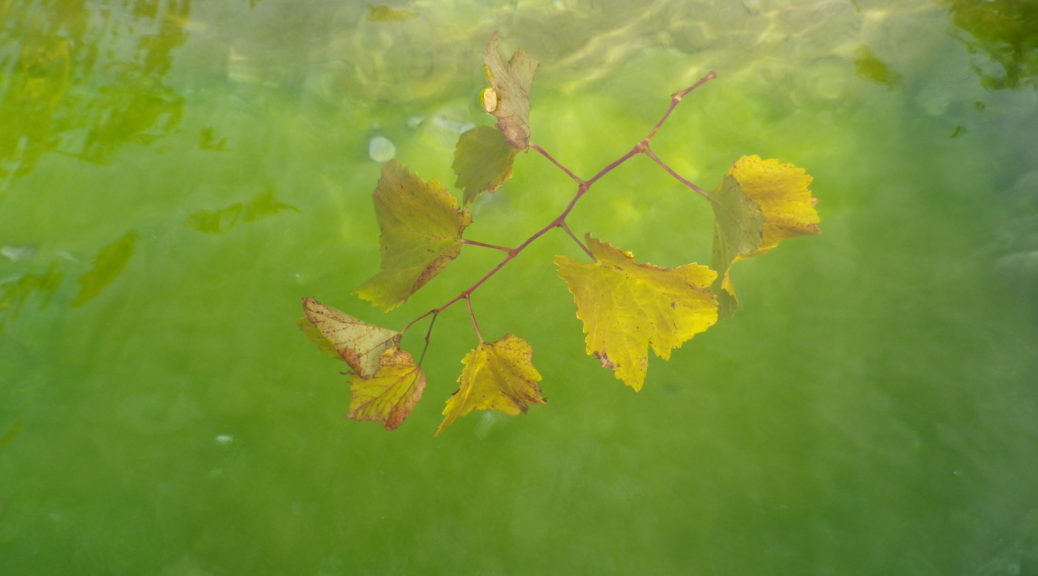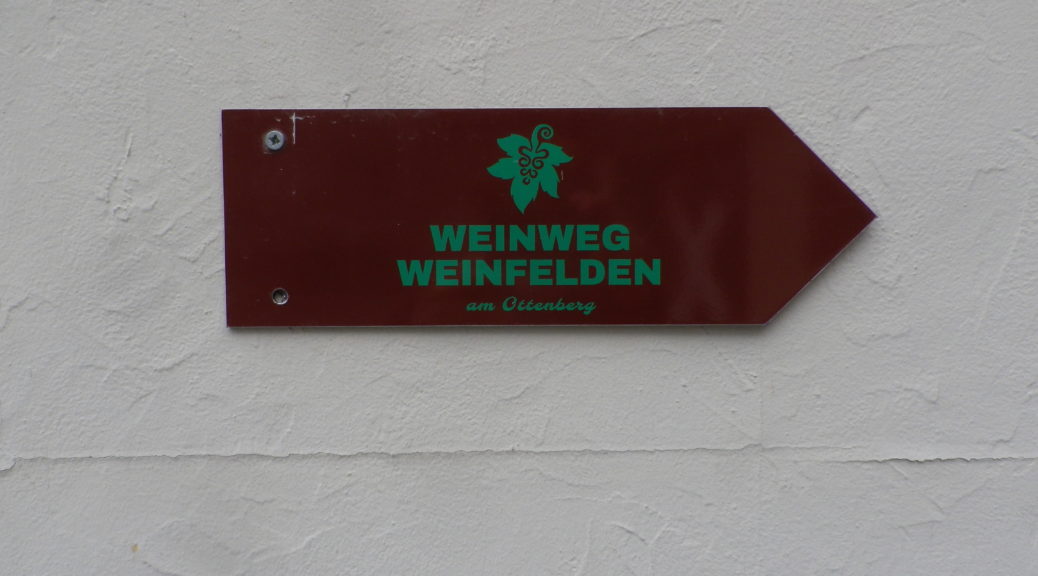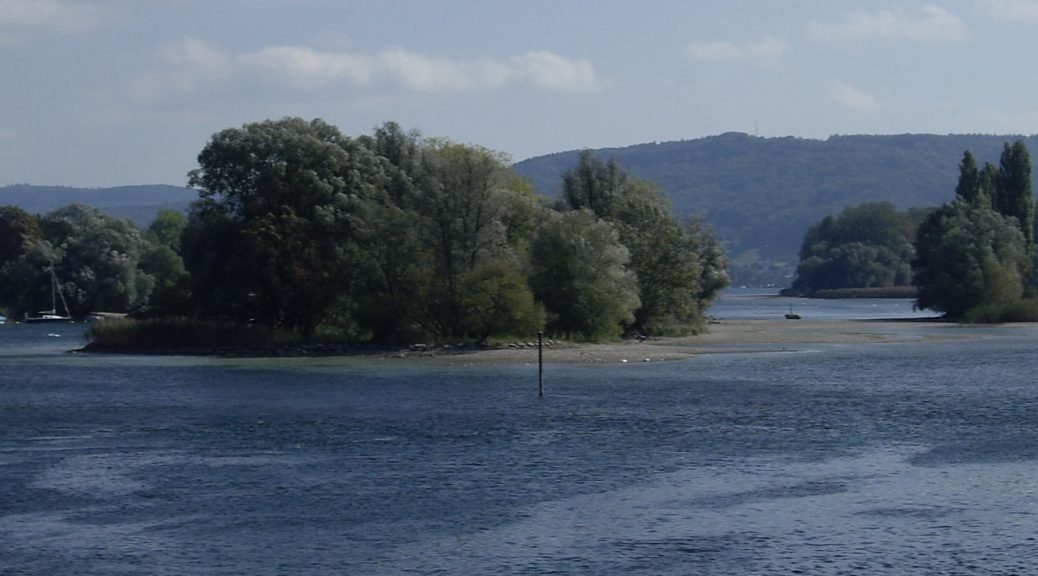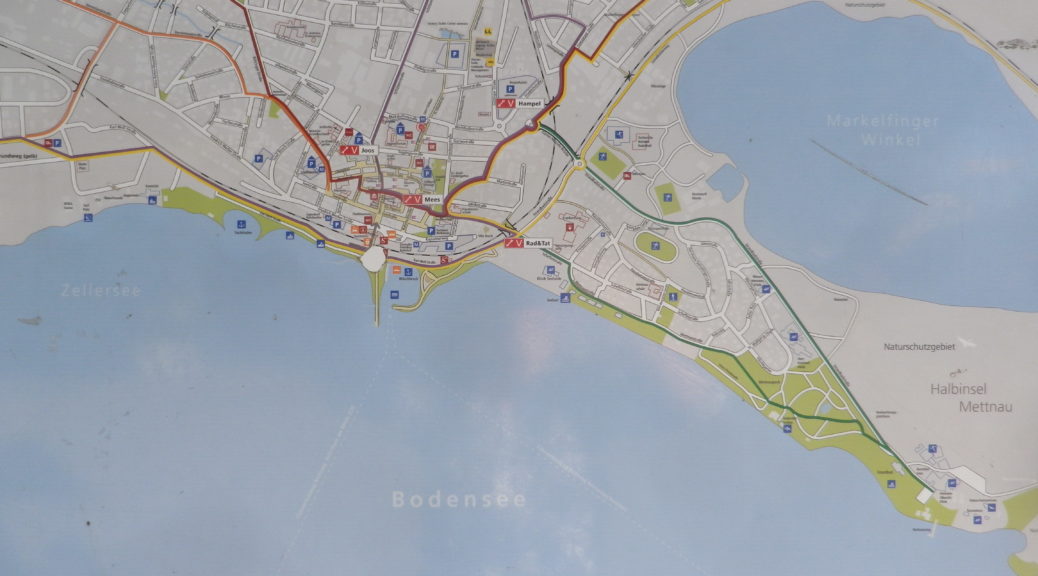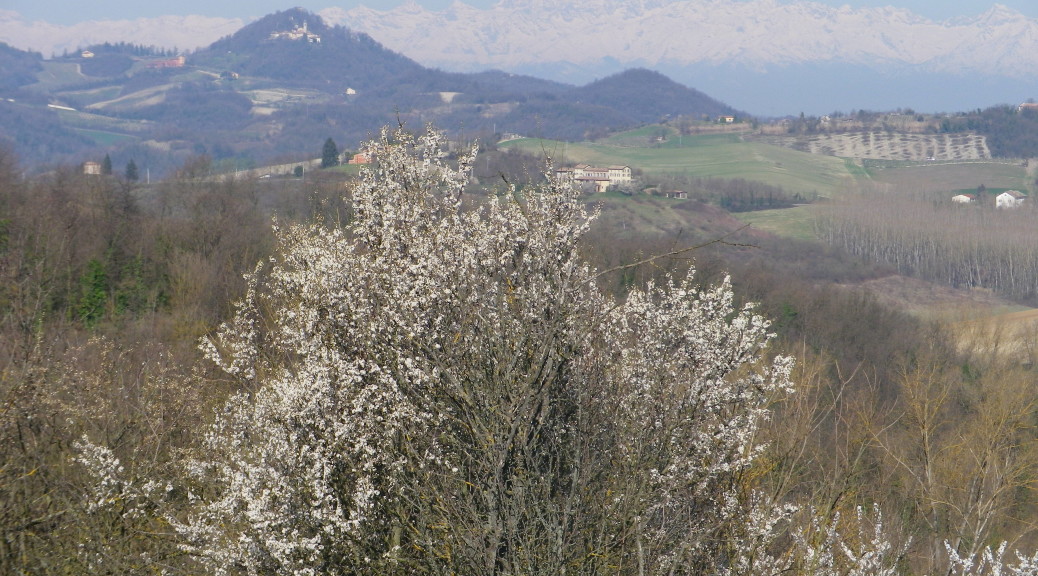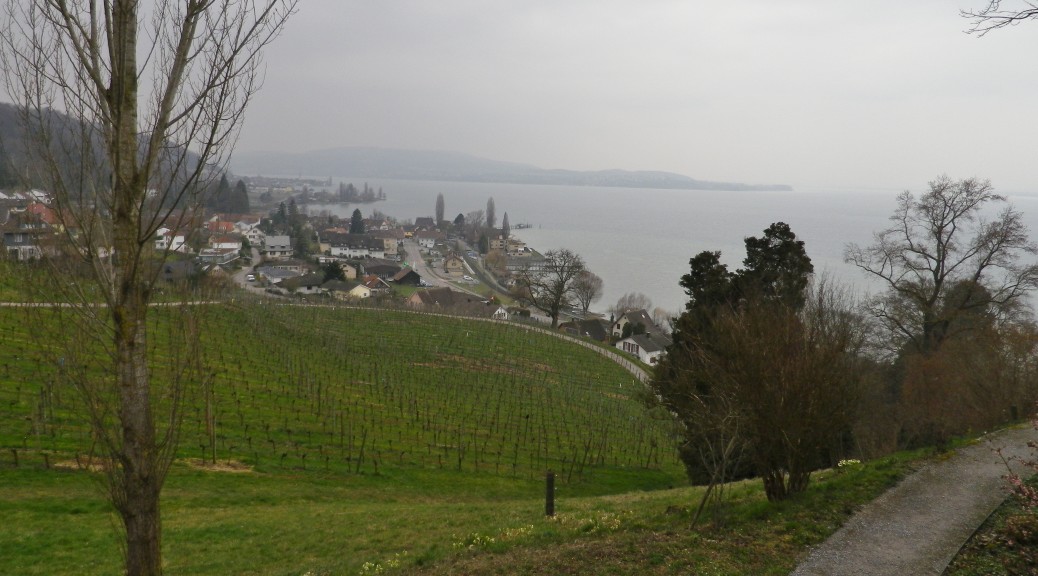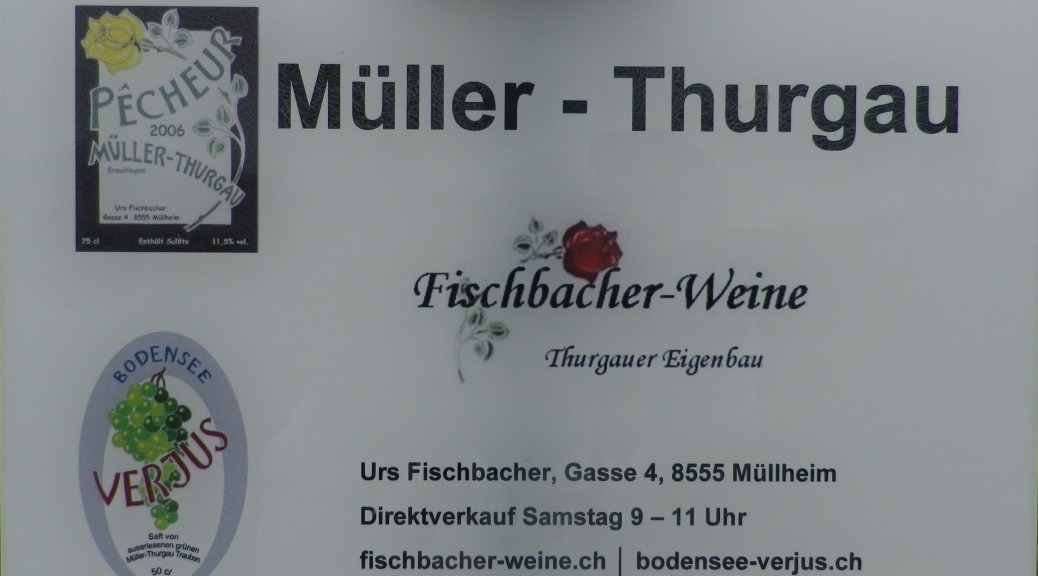Tag Archives: Thurgau
Wine Fields Wandering
Weinfelden means wine fields in German, and in Switzerland, the Canton of Thurgau, there is a small town with this name. Not surprisingly, vineyards surround it, and the town’s hiking wine itinerary passes through them.
A promising start to any wine trail itinerary, surely. Additionally, this particular trail promised a wine education path, and diverse opportunities to sample wine along the way. So, making my way to the trailhead in the center of Weinfelden, set on the banks of the Thur River, I was intent on hiking the trail as well as learning about and tasting the local wines.
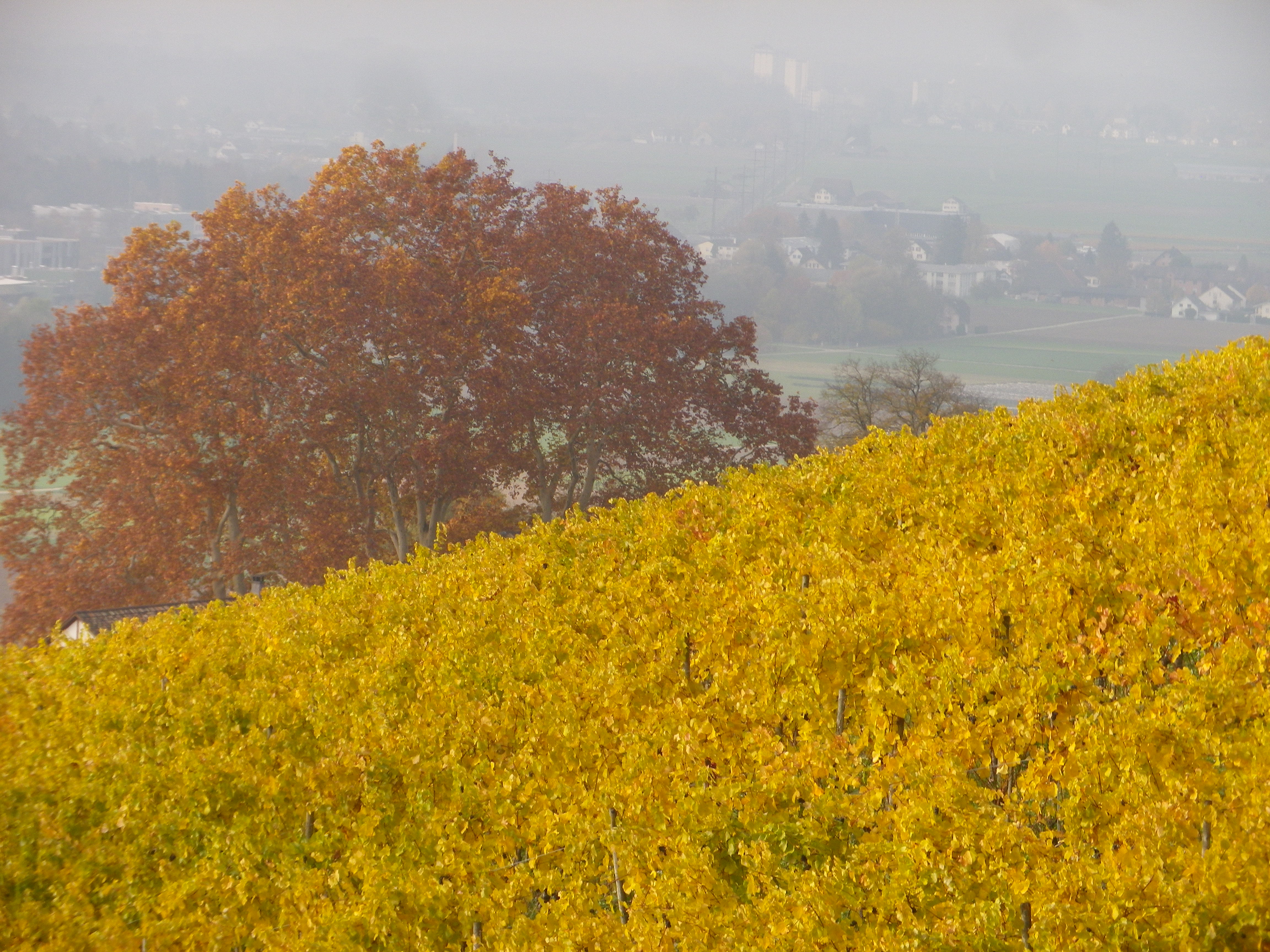
Wine Notes: Thurgau
What I Learned
The canton of Thurgau, in north central Switzerland, is a wine producing canton. For wine purposes, this canton has several different districts: The Upper Thur Valley, the Lower Thur Valley, Rhine, Lauchetal, Seebachtal, and Untersee. Its northern most section, the Untersee faces onto Lake Constance and the High Rhine. Much of the rest of the canton wine production lies in the valley of the Thur River, a tributary to the Rhine, from which the canton gets its name.
Weinfelden Weinweg: Trail in a Nutshell
Trail Name: Weinfelden Weinweg
Trail Type: A short distance circuit; well-maintained and almost exclusively paved, good marking on the trail
Length:
Total – 9 kilometers/6 miles
Convenient to: St Gallen, Switzerland; Konstanz, Germany
Marking: Burgundy colored metal arrow, with green grape leaf and trail name letters. See featured photo above.
Gallery October 2019
Wine Notes: Bodensee’s Untersee
What I Learned
The Bodensee wine district lies in a true garden spot for Germany, Switzerland and Austria, where fruit trees, truck gardens, and vineyards are tucked among small villages and ancient religious foundations.
It is located on Lake Constance. It is known in the German-speaking world as the Bodensee, and fondly referred to as the “German Sea” because it is shared between Germany, Austria and Switzerland. The lake itself has three distinct parts: the Obersee , the Untersee, and the Seerhein. There are vineyards along much of all of it.
Bodensee Radweg: Trail in a Nutshell
Trail Name: Bodensee Radweg (Lake Constance Bike Trail) – Untersee segment
Trail Type: long-distance, multinational cycling circuit; very well-maintained and almost exclusively paved, with excellent marking along the trail
Length:
Total – Full Bodensee Radweg is 270 kilometers/167.75 miles
Segment: Untersee circuit only is 72 kilometers/44.75 miles
Convenient to: Konstanz, Germany/Kreuzlingen, Switzerland
Marking: Stylized black stick figure on bike with blue rear wheel, on a white background Trail Description:
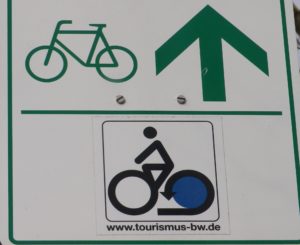
Gallery April 2016
A Tribute to Mueller-Thurgau
The Lake Constance Region tourism information promotes its “Mediterranean feel”. Nonetheless, the weather can be cold, wet, and windy, especially in early spring or late fall. (See the photo below.) Vintners here would often suffer bad harvests for years in a row. But thanks to local man, Hermann Mueller, the industry gained a new lease on life.
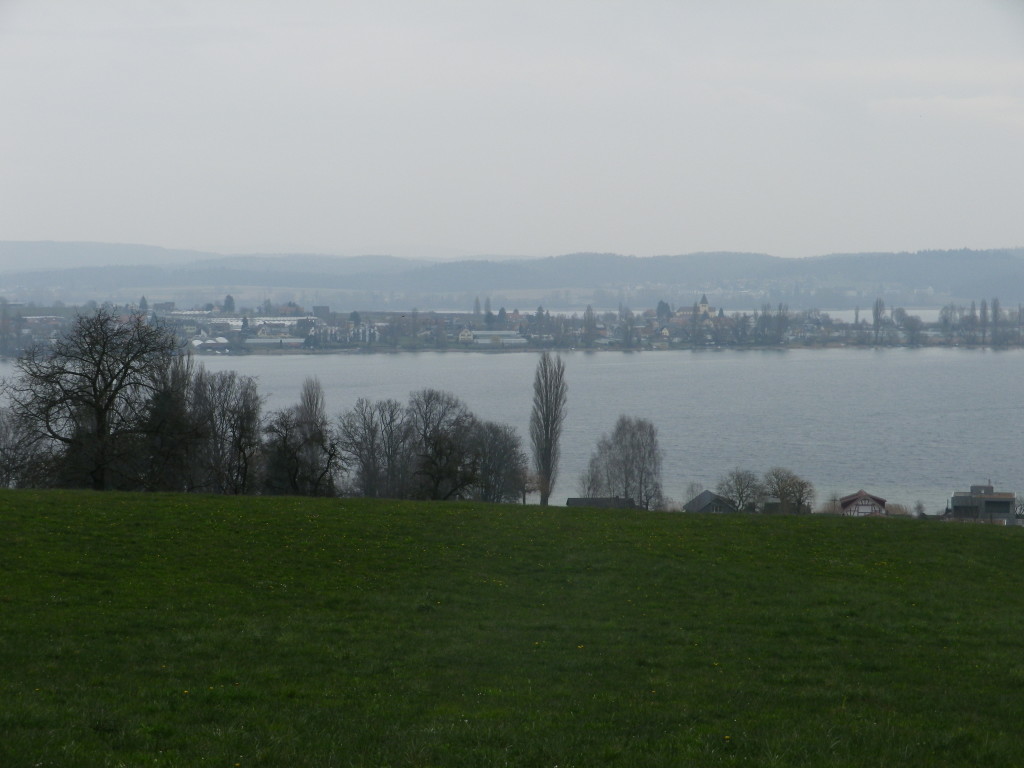
Wine Notes: Mueller-Thurgau
What I Learned
The northeast corner of Switzerland, where Germany, Austria and Switzerland group together around Lake Constance and the Lower Lake(the Bodensee and the Untersee, in German), is marketed as Mediterranean-like. While the area does boast some of the warmer and sunnier days in this part of the German-speaking world, due in part to the lake and the Rhine River which flows through it, the reality is that it is often cloudy, if not rainy, with windy and cool conditions. Hence vintners here face challenges growing grapes.
In 1882, Hermann Mueller, a local man, came to the rescue. Born in the village of Taegerwilen, within sight of Germany’s city of Constance and its Swiss conjoined city Kreuzlingen, he grew up in this area. His father was a part-time vintner, and his mother from the great wine region of the German Rheingau (further up the Rhine). Oenology was in his blood. After completing high school in Constance, and teaching for a stint in nearby Stein am Rhein, he entered the University of Wuerzburg where he graduated with a Ph.D. in botany. He worked in the Rheingau at the Prussian Institute for Horticulture and Viticulture, but the issues faced by Thurgau grape producers were not far from his mind.
